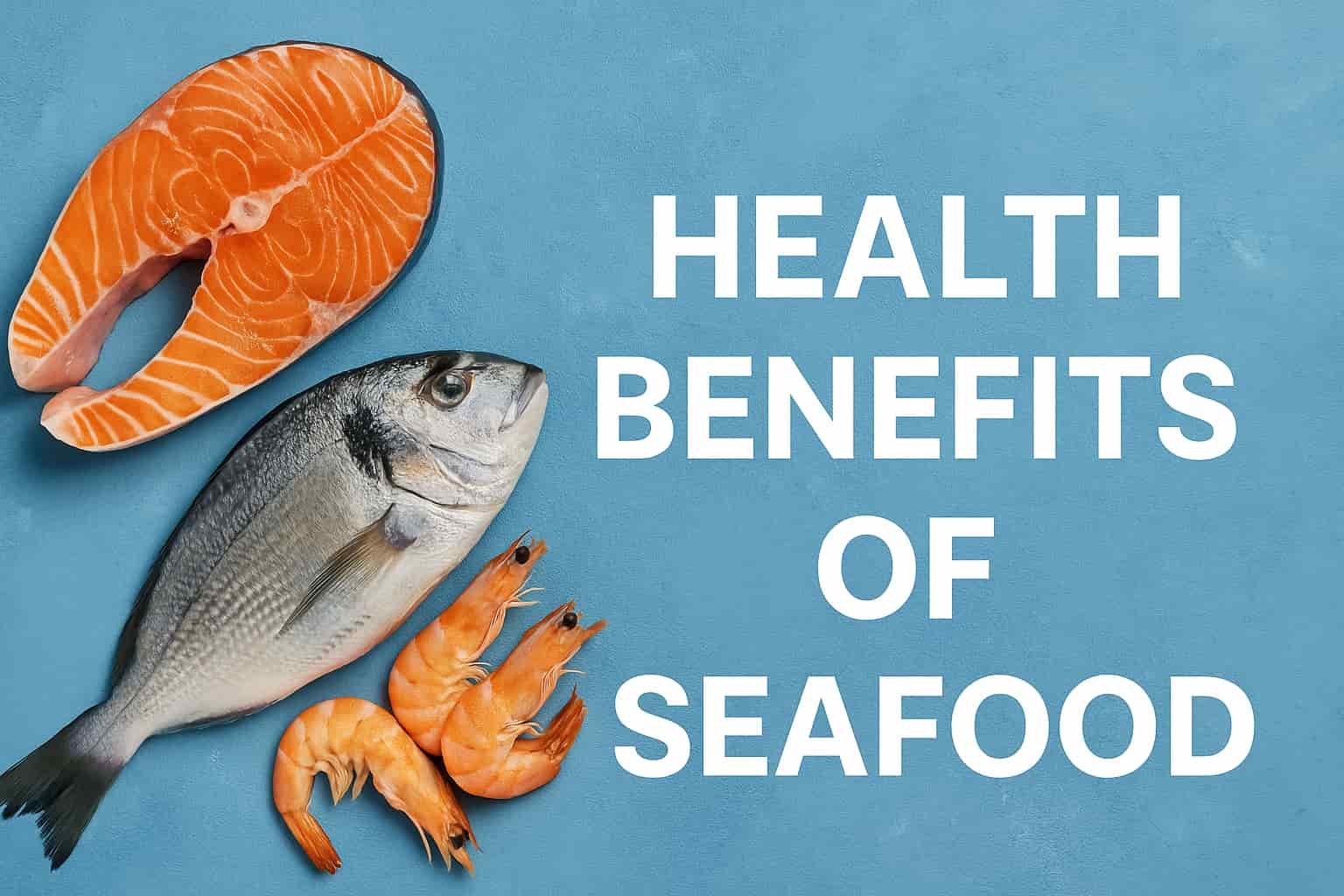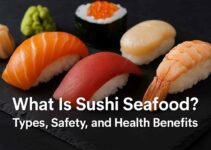Seafood stands as one of the most nutritionally dense food categories, delivering a powerful combination of high-quality proteins, essential vitamins, and healthy fats. With over 32,000 edible marine species, including fish, shellfish, and crustaceans, seafood offers scientifically backed health benefits that support critical body functions. These benefits include improved cardiovascular health, enhanced cognitive performance, stronger immune responses, and effective weight management. According to the American Heart Association, consuming at least two servings of fatty fish per week reduces the risk of heart disease by up to 36%. The World Health Organization also emphasizes seafood’s vital role in brain development, particularly during pregnancy and early childhood. This article provides definitive, science-based answers to common questions about seafood’s health benefits. You will discover exactly how seafood supports heart health, boosts brain function, and contributes to disease prevention with precise data and clear examples.
Contents
- 1 What Are the Scientifically Proven Health Benefits of Eating Seafood?
- 2 Which Essential Nutrients Are Found in Common Types of Seafood?
- 3 How Does Eating Seafood Help Reduce the Risk of Chronic Diseases?
- 4 Is Seafood Safe for Pregnant Women and Young Children?
- 5 What Are the Best Seafood Choices for Maximum Health Benefits?
- 6 How Often Should You Eat Seafood to See Noticeable Health Improvements?
- 7 Are There Any Risks Associated with Consuming Seafood?
What Are the Scientifically Proven Health Benefits of Eating Seafood?
Seafood consumption delivers six clinically proven health benefits: improved heart health, enhanced brain function, stronger immunity, better weight management, reduced inflammation, and lower risk of chronic diseases.
How Does Seafood Consumption Improve Heart Health?
Seafood improves heart health by providing high concentrations of long-chain omega-3 fatty acids, specifically EPA and DHA. Clinical trials show that consuming 250 to 500 milligrams of EPA and DHA daily reduces triglyceride levels by 15 to 30 percent and lowers blood pressure by an average of 5 millimeters of mercury. Studies published in the Journal of the American College of Cardiology confirm that regular seafood intake reduces the risk of fatal heart attacks by 35 percent. Fatty fish such as salmon, mackerel, and sardines are the most effective options, delivering up to 1,500 milligrams of omega-3s per 100 grams.
Can Eating Seafood Regularly Enhance Brain Function and Memory?
Seafood enhances cognitive performance and memory retention due to its high omega-3 content and essential micronutrients like vitamin B12 and selenium. A 2022 study from Frontiers in Aging Neuroscience found that adults who consumed seafood at least twice per week experienced a 25 percent slower cognitive decline compared to those who did not include seafood in their diets. Omega-3 fatty acids directly support the structural integrity of neurons, improving synaptic plasticity and memory recall. Specific seafood like salmon and trout also provide up to 80 percent of the daily recommended intake of vitamin B12, a nutrient critical for preventing neurodegeneration and memory loss.
What Role Does Seafood Play in Strengthening the Immune System?
Seafood strengthens the immune system by delivering high levels of zinc, selenium, and vitamin D. These nutrients activate immune responses, increase white blood cell production, and reduce chronic inflammation. Oysters contain the highest zinc concentration among all foods, providing 605 percent of the daily value per 100 grams. Selenium, abundant in shrimp and tuna, functions as a powerful antioxidant that protects immune cells from oxidative damage. Additionally, vitamin D from fatty fish like salmon helps regulate immune function, reducing the risk of autoimmune diseases by up to 22 percent, as confirmed by research from the National Institutes of Health.
Which Essential Nutrients Are Found in Common Types of Seafood?
Seafood provides seven essential nutrients critical for optimal health: omega-3 fatty acids, high-quality protein, vitamin D, vitamin B12, iodine, zinc, and selenium.
What Are the Omega-3 Fatty Acid Levels in Different Seafood Types?
Omega-3 fatty acids, specifically EPA and DHA, are abundant in fatty fish and shellfish. Salmon contains the highest concentration, offering up to 2,500 milligrams of omega-3s per 100 grams. Mackerel provides approximately 2,000 milligrams, while sardines deliver around 1,500 milligrams per 100 grams. Shellfish like oysters and mussels also contribute moderate amounts, ranging from 500 to 800 milligrams per serving.
The American Heart Association recommends a minimum intake of 500 milligrams of EPA and DHA per day for heart health. Consuming just one serving of fatty fish per week can meet and exceed this requirement, directly supporting cardiovascular and cognitive function.
Which Seafood Are Richest in High-Quality Protein?
Seafood provides complete proteins that contain all nine essential amino acids required for muscle repair and immune function. Tuna ranks highest among common seafood options, offering 29 grams of protein per 100 grams. Salmon follows closely with 25 grams, while shrimp and scallops provide 20 to 24 grams per 100 grams.
Compared to plant-based protein sources, seafood offers superior digestibility and higher biological value, meaning the body can absorb and utilize these proteins more effectively. Including seafood regularly in your diet ensures sustained muscle maintenance and faster recovery after physical activities.
How Much Vitamin D and B12 Do You Get from Eating Seafood?
Seafood is one of the richest natural sources of vitamin D and vitamin B12. A 100-gram serving of salmon provides approximately 526 IU of vitamin D, fulfilling over 66 percent of the daily recommended intake. Fatty fish like mackerel and herring also deliver between 300 to 400 IU per serving.
For vitamin B12, clams top the list, offering 1,200 percent of the daily value in just 100 grams. Salmon and trout contribute between 200 to 300 percent of the daily value per serving. These nutrients are essential for maintaining bone health, supporting the nervous system, and preventing anemia.
How Does Eating Seafood Help Reduce the Risk of Chronic Diseases?
Regular seafood consumption reduces the risk of five major chronic diseases: heart disease, stroke, type 2 diabetes, certain cancers, and rheumatoid arthritis.
Can Seafood Lower the Risk of Heart Disease and Stroke?
Seafood lowers the risk of heart disease and stroke by improving blood lipid profiles, reducing inflammation, and stabilizing heart rhythms. Clinical research published in the New England Journal of Medicine indicates that individuals consuming at least two servings of fish weekly have a 36 percent lower risk of fatal heart disease and a 27 percent lower risk of ischemic stroke.
The high content of EPA and DHA in fatty fish reduces arterial plaque formation and prevents dangerous blood clots. Incorporating salmon, mackerel, and sardines into weekly meal plans directly supports long-term cardiovascular health.
Is There a Link Between Seafood and Lower Diabetes Risk?
Seafood reduces the risk of type 2 diabetes by improving insulin sensitivity and decreasing systemic inflammation. A cohort study involving over 400,000 participants, published in Diabetes Care, found that individuals who consumed seafood regularly had a 19 percent lower risk of developing type 2 diabetes compared to those with minimal seafood intake.
Fatty fish such as salmon and trout help regulate blood glucose levels through their anti-inflammatory properties and high vitamin D content. Additionally, seafood is naturally low in carbohydrates, making it an ideal protein source for blood sugar control.
How Does Seafood Consumption Contribute to Cancer Prevention?
Seafood contributes to cancer prevention by supplying antioxidants, anti-inflammatory compounds, and essential nutrients that inhibit tumor growth. Omega-3 fatty acids reduce the expression of pro-inflammatory genes associated with cancer cell proliferation. Selenium, particularly abundant in tuna and shrimp, plays a critical role in DNA repair and the elimination of free radicals that can cause cell mutations.
A meta-analysis published in Cancer Epidemiology, Biomarkers & Prevention reported that individuals with higher seafood consumption had a 12 percent lower risk of colorectal cancer and an 18 percent lower risk of breast cancer. Including a variety of seafood in your diet strengthens the body’s natural defenses against cancer development.
Is Seafood Safe for Pregnant Women and Young Children?
Seafood is safe and beneficial for pregnant women and young children when consumed in appropriate types and quantities. It provides critical nutrients for fetal development and childhood growth, particularly omega-3 fatty acids, iodine, and vitamin D.
Which Types of Seafood Are Safe and Beneficial During Pregnancy?
The safest and most beneficial seafood options during pregnancy include salmon, sardines, trout, shrimp, and canned light tuna. These varieties contain high levels of omega-3 fatty acids and low levels of mercury. According to the U.S. Food and Drug Administration (FDA), pregnant women should consume 8 to 12 ounces of low-mercury seafood per week to support fetal brain and eye development.
Avoid high-mercury fish such as king mackerel, shark, swordfish, and tilefish, as these species pose developmental risks to the fetus. Prioritizing wild-caught and sustainably sourced seafood also ensures higher nutritional value and safety.
How Much Seafood Should Children Eat for Optimal Development?
Children should consume between 2 to 8 ounces of seafood per week, depending on their age. The FDA recommends that children aged 1 to 3 years consume 2 ounces weekly, while children aged 4 to 7 years should consume 4 ounces, and those aged 8 to 12 years can safely consume up to 8 ounces per week.
Seafood provides essential nutrients like DHA, which is vital for brain development and cognitive function during early childhood. Incorporating soft-textured fish like salmon and cod helps children develop healthy eating habits while meeting their nutritional needs.
Are There Seafood Types Pregnant Women and Children Should Avoid?
Pregnant women and children should avoid seafood known for high mercury content and contamination risks. These include king mackerel, shark, swordfish, tilefish, and bigeye tuna. Additionally, raw or undercooked seafood such as oysters, clams, and sushi-grade fish should be avoided during pregnancy and early childhood to prevent foodborne illnesses caused by bacteria and parasites.
Opt for thoroughly cooked seafood dishes and ensure proper hygiene in preparation to maximize safety and nutritional benefits.
What Are the Best Seafood Choices for Maximum Health Benefits?
The best seafood choices for health benefits are those rich in omega-3 fatty acids, high-quality protein, and essential micronutrients while having low levels of contaminants.
Which Are the Healthiest Fatty Fish to Eat Weekly?
The healthiest fatty fish to consume weekly are salmon, mackerel, sardines, herring, and trout. These species contain the highest concentrations of EPA and DHA, delivering between 1,000 to 2,500 milligrams of omega-3 fatty acids per 100 grams.
The American Heart Association recommends eating at least two servings of fatty fish per week to reduce the risk of cardiovascular disease and cognitive decline. Wild-caught varieties generally provide higher nutrient density compared to farmed fish, particularly in terms of omega-3 content and lower saturated fat levels.
Are Shellfish Like Oysters and Clams Good for Your Health?
Shellfish such as oysters, clams, and mussels provide exceptional health benefits due to their high mineral content and low fat levels. Oysters offer the highest zinc concentration of any food, delivering over 600 percent of the daily value in just 100 grams. Clams are rich in vitamin B12, providing up to 1,200 percent of the daily value per serving.
Additionally, shellfish contain significant amounts of iron, selenium, and iodine, all of which support thyroid function, immune health, and red blood cell production. Because they are low in calories and high in protein, shellfish also promote weight management.
Is Farmed or Wild-Caught Seafood Better for Nutritional Value?
Wild-caught seafood generally offers higher nutritional value compared to farmed varieties. Wild fish consume natural diets rich in algae and plankton, which directly increases their omega-3 fatty acid content. For example, wild salmon contains up to 30 percent more EPA and DHA than farmed salmon.
However, not all farmed seafood is inferior. Sustainable aquaculture practices have improved the nutritional profile of farmed fish, particularly when raised in controlled environments with high-quality feed. When choosing farmed seafood, look for certifications from organizations like the Aquaculture Stewardship Council (ASC) or Best Aquaculture Practices (BAP) to ensure safety and nutritional integrity.
How Often Should You Eat Seafood to See Noticeable Health Improvements?
For noticeable health improvements, most health organizations recommend consuming seafood at least twice per week, totaling 8 to 12 ounces of a variety of seafood.
What Do Health Authorities Recommend About Weekly Seafood Intake?
The American Heart Association and the Dietary Guidelines for Americans both recommend consuming at least two servings of seafood per week. Each serving should be approximately 4 to 6 ounces, focusing primarily on fatty fish like salmon, mackerel, or sardines for optimal cardiovascular and cognitive benefits.
Consistent weekly consumption helps maintain adequate omega-3 fatty acid levels in the body, supports healthy cholesterol levels, and reduces systemic inflammation. Meeting this recommendation significantly lowers the risk of heart disease, stroke, and age-related cognitive decline.
Can You Eat Too Much Seafood and Face Health Risks?
Excessive seafood consumption, particularly of high-mercury species, can lead to mercury accumulation and associated health risks. The FDA advises limiting the intake of high-mercury fish like king mackerel, swordfish, shark, and tilefish.
For most people, staying within the recommended range of 8 to 12 ounces per week ensures health benefits without the risk of mercury toxicity. Pregnant women and young children should be especially cautious and prioritize low-mercury seafood options such as salmon, shrimp, and sardines.
Are There Any Risks Associated with Consuming Seafood?
Seafood consumption does carry certain risks related to mercury contamination, food allergies, and improper handling or cooking. Understanding and managing these risks ensures safe and beneficial consumption.
How Serious Is the Risk of Mercury Contamination in Seafood?
Mercury contamination is a significant concern, particularly in larger, long-living predatory fish such as king mackerel, shark, swordfish, tilefish, and bigeye tuna. These species accumulate higher levels of methylmercury, which can be toxic to the nervous system, especially in developing fetuses and young children.
According to the Environmental Protection Agency (EPA), adults should limit their intake of high-mercury fish to avoid exceeding the safe upper limit of 0.1 micrograms of mercury per kilogram of body weight per day. To minimize risks, prioritize low-mercury options such as salmon, sardines, trout, shrimp, and canned light tuna.
What Are the Signs of Seafood Allergies and How to Manage Them?
Seafood allergies typically present with immediate symptoms such as hives, swelling of the lips and face, difficulty breathing, abdominal pain, and nausea. In severe cases, anaphylaxis may occur, requiring emergency medical attention.
Shellfish, particularly crustaceans like shrimp, crab, and lobster, are the most common triggers of seafood allergies. Individuals with known allergies should strictly avoid the problematic seafood and carry an epinephrine auto-injector if prescribed. For uncertain cases, allergen testing under medical supervision is recommended to confirm specific triggers.
How to Select and Cook Seafood Safely to Avoid Foodborne Illness?
Selecting and preparing seafood correctly is critical to prevent foodborne illnesses caused by bacteria, viruses, and parasites. Always purchase seafood from reputable suppliers who store products at safe temperatures (below 40°F or 4°C). Fresh fish should have clear eyes, firm flesh, and a mild ocean scent.
Ensure seafood is cooked to an internal temperature of at least 145°F (63°C) to eliminate harmful pathogens. Avoid consuming raw or undercooked seafood unless it has been specifically processed to eliminate parasites, as indicated by FDA-approved handling methods. Proper storage and hygiene practices during preparation further reduce the risk of contamination and illness.



